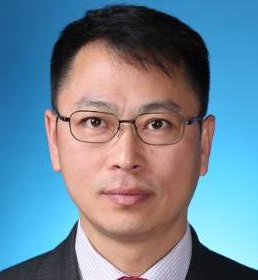
Prof. Xiaoqiang Cui
School of Materials Science and Engineering, Jilin University, China
Title: Atomic regulation of low-dimensional catalysts for hydrogen evolution reaction
Abstract:
Comprehensive utilization of the hydrogen energy is the current international research hotspot, and it is also the key technology to achieve the national goal of "carbon peaking and carbon neutral". We focus on the rational design and controllable synthesis of low-dimensional catalysts for electro or photo catalytic hydrogen evolution reaction (HER) and reveal the structure-activity relationship. Three catalytic systems for hydrogen evolution reaction will be introduced by atomic regulation of these low-dimensional catalysts: (1) interfacial engineering high efficient HER catalysts through strong metal (Co, Pd, Ir)-support (1T MoS2) interaction that induced phase transition by compressive strain. (2) HER catalysts based on two-dimensional metallene hydrides, in which H atoms stabilize the metallene and regulate the HER activity. (3) wet chemical synthesis of hydrogenated TiO2 with switchable defects for photocatalytic hydrogen evolution.
References:
1. K. Qi, X. Cui* et al., Single-atom cobalt array bound to distorted 1T MoS2 with ensemble effect for hydrogen evolution catalysis, Nat Commun. 2019, 10, 5231.
2. B. Shang, X. Cui* et al., Lattice-Mismatch-Induced Ultrastable 1T-Phase MoS2-Pd/Au for Plasmon-Enhanced Hydrogen Evolution, Nano Lett. 2019, 19, 2758.
3. J. Fan, X. Cui* et al., Hydrogen Stabilized RhPdH 2D Bimetallene Nanosheets for Efficient Alkaline Hydrogen Evolution, J. Am. Chem. Soc. 2020, 142, 3645.
4. G. Jia, X. Cui* et al., Wet-chemistry hydrogen doped TiO2 with switchable defects control for photocatalytic hydrogen evolution, Matter. 2022, 5, 206.
5. X. Ruan, X. Cui* et al., Favorable Energy Band Alignment of TiO2 Anatase/Rutile Heterophase Homojunctions Yields Photocatalytic Hydrogen Evolution with Quantum Efficiency Exceeding 45.6%, Adv. Energy Mater. 2022, 12, 2200298.
6. J. Fan, X. Cui* et al., Spatially Confined PdHx Metallenes by Tensile Strained Atomic Ru Layers for Efficient Hydrogen Evolution, J. Am. Chem. Soc. 2023, 145, 5710.
7. Y. Qiu, X. Cui* et al., Atomically Dispersed CrOX on Pd Metallene for CO-Resistant Methanol Oxidation, Nano Lett. 2023, 23, 9555.
8. X. Ruan, X. Cui* et al., A Twin S-Scheme Artificial Photosynthetic System with Self-Assembled Heterojunctions yields Superior Photocatalytic Hydrogen Evolution Rate, Adv. Mater. 2023, 35, 2209141.
9. X. Ruan, X. Cui* et al., Catalyzing Artificial Photosynthesis with TiO2 Heterostructures and Hybrids – Emerging Trends in a Classical yet Contemporary Photocatalyst, Adv. Mater. 2024, 36, 2305285.
10. X. Ruan, X. Cui* et al., Artificial Photosynthetic System with Spatial Dual Reduction Site Enabling Enhanced Solar Hydrogen Production, Adv. Mater. 2024, 36, 2309199.
Keywords: hydrogen evolution reaction; low-dimensional catalysts; low-dimensional catalysts;
Biography:
Xiaoqiang Cui received his Ph.D. degree from the Changchun Institute of Applied Chemistry, Chinese Academy of Sciences, in 2002. Following his doctoral studies, he worked as a research fellow at Nanyang Technological University (2005) and the National Institute of Advanced Industrial Science and Technology in Japan (2008). In 2010, Dr. Cui joined Jilin University, where he is currently appointed as the Changbai Mountain Scholars Professor and the Tang Aoqing Scholars Distinguished Professor in the School of Materials Science and Engineering. He is the deputy Dean of the school. His research interests include the interfacial regulation of low-dimensional materials, and electrocatalysts and photocatalysts for energy conversion and storage. He has published over 200 SCI-index papers, which have been cited over 10,000 times, resulting in an H-index of 60. He holds 37 granted invention patents. More detailed information can be found in the following link:
https://www.x-mol.com/groups/Cui_Xiaoqiang/publications